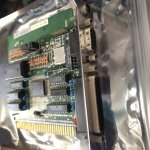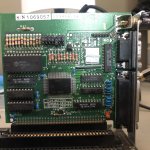agentb
Experienced Member
Quick question, what is this RCA jack on this MDA card? Is it composite video? (As I don’t have any monitor to hook the 9-pin to.)
Also, in attempting to test a 5150 board, is connecting +5V and GND sufficient or do I also need to put +5V on that “power good” line - i most certainly do not have the proper XT/AT power supply to test the 5150 board.
Thanks for any info.
Also, in attempting to test a 5150 board, is connecting +5V and GND sufficient or do I also need to put +5V on that “power good” line - i most certainly do not have the proper XT/AT power supply to test the 5150 board.
Thanks for any info.



